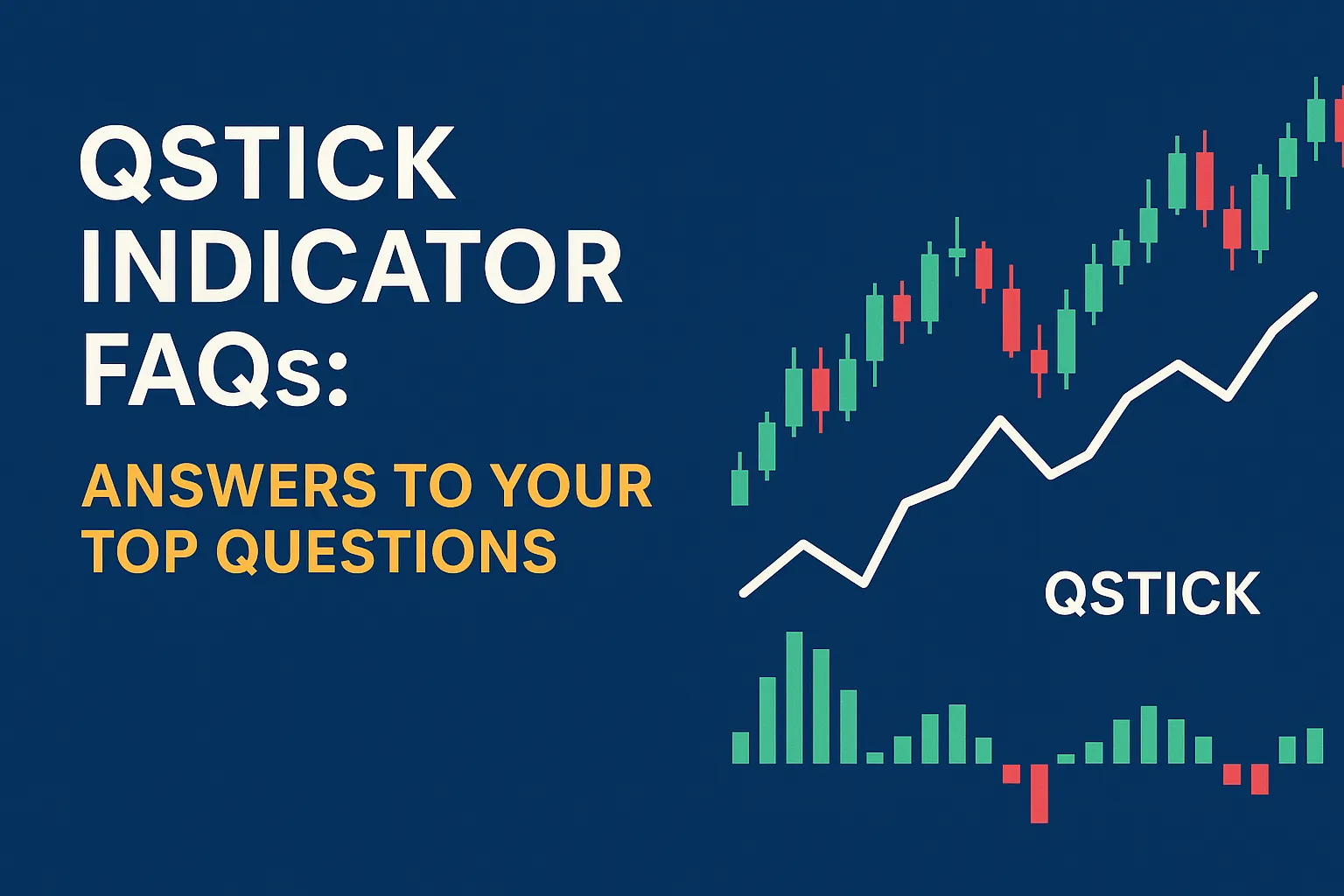Introduction
The Qstick indicator is a popular tool for identifying market momentum and trend direction using moving averages of price changes. In this FAQ guide, we’ll address the most common questions traders have about how the Qstick works, when to use it, and how to get the most from it in your trading.
Top Qstick Indicator FAQs
1. What is the Qstick Indicator?
The Qstick is a momentum oscillator that measures the moving average of the difference between closing prices and opening prices over a set number of periods. It helps traders gauge bullish or bearish sentiment over time.
2. How is the Qstick Indicator Calculated?
The formula is simple:
- Qstick = Moving Average of (Close – Open) over a chosen period (e.g., 8, 14 days).
If the Qstick is above zero, it suggests bullish momentum.
If it’s below zero, it suggests bearish momentum.
3. What Does a Positive Qstick Reading Mean?
A positive Qstick indicates that, on average, prices are closing higher than they opened, signalling bullish sentiment.
4. What Does a Negative Qstick Reading Mean?
A negative Qstick shows that, on average, prices are closing lower than they opened, pointing to bearish market pressure.
5. How Do Traders Use the Qstick Indicator?
- Trend Confirmation: Aligns with longer-term trend analysis.
- Crossover Signals: When Qstick crosses the zero line, it suggests a trend shift.
- Divergence: A Qstick moving opposite to price may hint at a trend reversal.
6. What Are the Best Settings for the Qstick?
Common periods include 8, 14, or 21, depending on your trading style:
- Short-Term Trading: 8-period Qstick.
- Swing Trading: 14-period Qstick.
- Long-Term Investing: 21-period Qstick.
Always adjust settings based on the asset’s volatility and time frame.
7. Can the Qstick Be Used Alone?
It’s not recommended to use Qstick as a standalone signal. It works best when combined with:
- Moving Averages
- Support and Resistance
- Volume Analysis
8. Is the Qstick Good for Day Trading?
It can be used for short-term trading, especially on 5-minute to 1-hour charts, but traders should combine it with faster momentum indicators for better precision.
9. What Markets Work Best for the Qstick Indicator?
The Qstick works well in:
- Stocks
- Forex
- Cryptocurrencies
- Futures
Any market where price momentum matters.
10. How Does Qstick Compare to MACD or RSI?
- Qstick: Focuses on open-close momentum.
- MACD: Measures the difference between moving averages.
- RSI: Gauges overbought/oversold conditions.
Using Qstick + MACD or Qstick + RSI can create powerful trading setups.
Conclusion
The Qstick indicator is a simple but effective way to track market momentum and identify trend shifts. By understanding its signals and combining them with confirmation tools, traders can enhance their strategy and trade with greater confidence.













